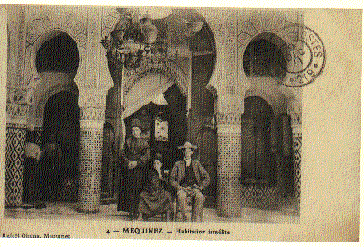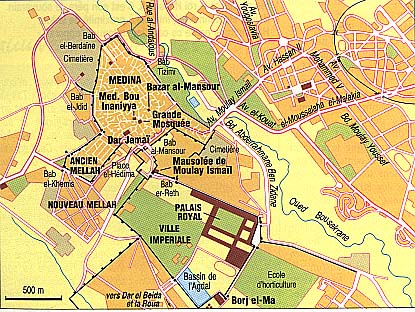


The old Mellah (Jewish quarter) was located on a bad terrain (a sloping gorge). The new Mellah was acquired by the jewish community in the 1920s in part due to the efforts of the BERDUGO family. This new larger Mellah was built next to the old Mellah. It was walled and locked at night, for in Nissan 1911 the Mellah was attack, and was under seige for 3 months until the intervention of the French.
The first houses were built 1924 in the new mellah. The Rabbi Yeoushoua synagogue was inaugurated there in 1926. The Talmud Torah was built in 1930.

The signing of the Protectorate Treaty with France on 30 March 1912 sparked a revolt of tribal arabs. The Sultan was under seige at his palace in Fez. The small French garrison on site could barely defend itself while awaiting reinforcements.
On April 17, the populace changed its objective and attacked the Mellah. The Mellah's gates yielded to attacks by bullets and axes, and the Mellah was pillaged by the tribesmen. The French had previously confiscated the weapons of the jews following smuggling accusations. Fortunately, the jews managed to escaped through an unwatched gate and seek refuge in the royal palace. They remained there with virtually nothing to eat until April 28 when the French reinforcements arrived and liberated the Mellah. Many homes had been burned. About 150 Jews died and many were injured.